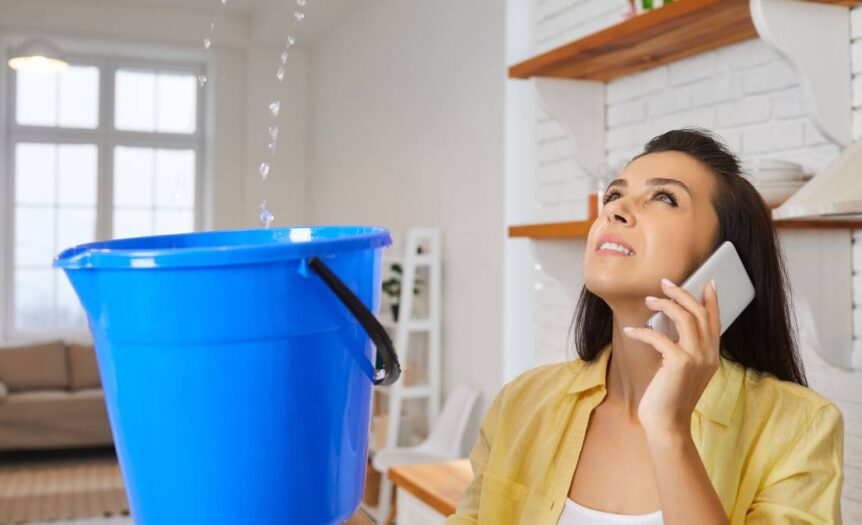As a homeowner, you will naturally want your family to feel safe in your home. However, there is an invader that can threaten the welfare of your little ones and your home’s structure: mold. It’s critical to know about the specific problems that can allow mold to thrive in your residence. Read on to learn about the five threats that can cause mold growth in your home.
A Leaky Roof
A common culprit responsible for mold growth is a leaky roof. An opening can expose areas of your attic, ceilings, and walls to unwanted moisture that will cause mold to thrive. Homeowners can avoid this by learning the signs of roof leaks. With the right know-how and careful fixes, they can keep that unwanted moisture at bay.
Excessive Humidity
Something else that can cause mold growth in your home is excessive humidity. This threat arises particularly in homes located in regions with a warm, sticky climate. Certain rooms, such as bathrooms or basements, can have disproportionate moisture levels.
Investing in a dehumidifier helps you address this issue. Monitoring and lowering indoor humidity levels limits the risk of mold spreading throughout living spaces.
Inadequate Ventilation
Your home’s ventilation allows fresh airflow to move freely through all living areas and keeps rooms dry. However, if air flows poorly in your home, it can lead to stagnant and humid air. This often becomes problematic in kitchens, bathrooms, and laundry rooms where steam often originates.
Installing vent fans and regularly opening windows will prevent conditions from worsening. Without the proper movement of air, condensation sticks to surfaces, providing mold the chance to grow where it goes unnoticed.
Pipe Leaks
If your home’s pipes are leaking, they can create ideal conditions for mold formation. This issue often takes place behind walls, underneath sinks, or beneath floors, where leaks stay undetected for extended periods.
Homeowners must address aging pipes and fittings immediately to prevent accumulations of moisture in unseen areas. If you detect them early, you can prevent the hassle of more significant mold issues caused by extensive water exposure.
Wall Damage
Finally, cracked or compromised walls also pose a significant risk to your home. Fissures allow water to infiltrate the structural foundation of a home and enter spaces behind drywall.
Saturated materials become ideal breeding grounds for mold, leading to health hazards. Repairing cracks eliminates the potential for continuous moisture exposure.
Addressing these threats can keep your home safe and healthy for your family. You can prevent growth by identifying dangers early and taking proactive measures against mold.










 Deering Estate
Deering Estate
 Massage Envy South Miami
Massage Envy South Miami
 Calla Blow Dry
Calla Blow Dry
 My Derma Clinic
My Derma Clinic
 Sushi Maki
Sushi Maki
 Sports Grill
Sports Grill
 The Healthy Kitchen
The Healthy Kitchen
 Golden Rule Seafood
Golden Rule Seafood
 Malanga Cuban Café
Malanga Cuban Café

 Kathleen Ballard
Kathleen Ballard
 Panter, Panter & Sampedro
Panter, Panter & Sampedro
 Vintage Liquors
Vintage Liquors
 The Dog from Ipanema
The Dog from Ipanema
 Rubinstein Family Chiropractic
Rubinstein Family Chiropractic
 Your Pet’s Best
Your Pet’s Best
 Indigo Republic
Indigo Republic




 ATR Luxury Homes
ATR Luxury Homes


 2112 Design Studio
2112 Design Studio
 Hamilton Fox & Company
Hamilton Fox & Company
 Creative Design Services
Creative Design Services
 Best Pest Professionals
Best Pest Professionals
 HD Tree Services
HD Tree Services
 Trinity Air Conditioning Company
Trinity Air Conditioning Company
 Cisca Construction & Development
Cisca Construction & Development
 Mosquito Joe
Mosquito Joe
 Cutler Bay Solar Solutions
Cutler Bay Solar Solutions


 Miami Royal Ballet & Dance
Miami Royal Ballet & Dance
 Christopher Columbus
Christopher Columbus
 Pineview Preschools
Pineview Preschools
 Westminster
Westminster
 Carrollton
Carrollton
 Lil’ Jungle
Lil’ Jungle
 Frost Science Museum
Frost Science Museum
 Palmer Trinity School
Palmer Trinity School
 South Florida Music
South Florida Music
 Pinecrest Orthodontics
Pinecrest Orthodontics
 Dr. Bob Pediatric Dentist
Dr. Bob Pediatric Dentist
 d.pediatrics
d.pediatrics
 South Miami Women’s Health
South Miami Women’s Health

 The Spot Barbershop
The Spot Barbershop
 My Derma Clinic
My Derma Clinic




 Miami Dance Project
Miami Dance Project

 Rubinstein Family Chiropractic
Rubinstein Family Chiropractic
 Indigo Republic
Indigo Republic

 Safes Universe
Safes Universe
 Vintage Liquors
Vintage Liquors
 Evenings Delight
Evenings Delight





 Atchana’s Homegrown Thai
Atchana’s Homegrown Thai
 Baptist Health South Florida
Baptist Health South Florida

 Laser Eye Center of Miami
Laser Eye Center of Miami
 Visiting Angels
Visiting Angels
 OpusCare of South Florida
OpusCare of South Florida

 Your Pet’s Best
Your Pet’s Best





 HD Tree Services
HD Tree Services
 Hamilton Fox & Company
Hamilton Fox & Company


 Creative Design Services
Creative Design Services